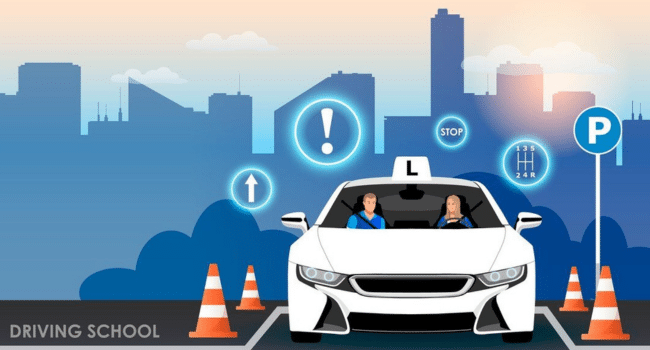Table of Contents
We all know that driving requires skills and command over the vehicle. These are some of the main factors that determine the skills of a driver and get you that coveted driving license. It’s also why driving schools focus on teaching new drivers as many driving skills as required to drive expertly on the road. However, previously, driver training gave more importance to technical skills and necessary road education to enable drivers to navigate the streets safely. However, in recent years, another factor, emotional intelligence (EI), has been recognized as an important part of driver training. The capacity to appreciate anyone at their core in driver preparation is tied in with understanding and managing feelings to have better control in your driving. It improves your street mindfulness and assists you with turning into a protected and dependable driver. Allow us to become familiar with the ability to appreciate anyone at their core and its consideration in driver preparation.
Understanding Emotional Intelligence in Driving
In layman’s terms, emotional intelligence is the potential to perceive and manage our own emotions whilst efficaciously coping with social interactions. When it involves driving, EI refers to drivers understanding their feelings like inflammation, frustration, anger, strain, and so forth. And handle them correctly even as riding. In riding, having emotional intelligence can be an awesome asset, supporting you to live aware, centred, and accountable. If the driver has managed to control their feelings, the possibility of moving into injuries due to carelessness is greatly reduced.
Emotional intelligence specializes in self-attention, social abilities, empathy, decision-making, and regulating our conduct. Developing emotional intelligence in new drivers improves their capacity to address hard situations on the road and make selections thoughtfully. Inculcating this capability in drivers can help create a safer, more responsible driving way of life in the future.
Benefits in Driving
Developing emotional intelligence among novice drivers can have many benefits:
Reduce Incidents of Rash Driving
Rash driving is, much of the time, a consequence of outrage, stress, or hunger. Drivers with a high ability to appreciate individuals on a deeper level are more mindful of their activities and their repercussions while driving. They can all the more likely control their feelings and settle on determined choices while driving. They are less prone to giving in to their emotions and driving rashly. This helps establish a calm road environment suitable for driving.
Improve Decision-making Ability
With higher emotional intelligence, drivers can take calculated and well-thought-out decisions on the road. Whether it’s an emergency or simple road navigation, emotional intelligence aids the driver in assessing the situation calmly and acting in everyone’s interest.
Better Cooperation
When drivers have high emotional intelligence, they’re better geared up to apprehend and empathize with different drivers. They are much more likely to cooperate with other drivers on the street with the intention of maintaining secure and wholesome surroundings and making sure the site visitors flow easily.
Integrating Emotional Intelligence in Driver Education
Inculcating safer driving behavior in amateur drivers is viable by way of integrating emotional intelligence in riding education. Along with riding strategies, the curriculum in riding schools should also encompass methods to broaden the driving force’s emotional intelligence. Here’s how Sydney driving schools and other schools can integrate emotional intelligence into driver training:
Modify the Curriculum
Driving schools in Sydney and other states of Australia already have a set curriculum for driving education. However, this curriculum can be modified to include ways to develop emotional intelligence along with different driving skills. Driving lessons can consist of interactive sessions, case studies and simulated scenarios that discuss how to recognize and handle various emotions while driving.
Use Simulations to Create Scenarios
Other than the curriculum, driving education can also include learning through interactive sessions and mock tests. In such sessions, drivers can be asked to interpret and react to simulated scenarios that invoke stressful, frustrating, or challenging situations requiring empathetic responses and quick decision-making. Using such simulations, drivers can develop their emotional intelligence and become responsible drivers.
Improve Communication Skills
As a general rule, street mishaps and crashes are a consequence of the absence of legitimate correspondence between the two drivers included. Further developing drivers’ relational abilities is fundamental to maintaining street security. Better relational abilities mean better associations out and about. Driving lessons should also focus on teaching drivers effective ways to convey their intentions and interpret other driver’s signals when on the road.
Teach Stress Management Techniques
Stress management is essential for any drivers. Driving in an unpleasant state can prompt errors that can cost lives. Showing pressure on the executive’s strategies like profound breathing, unwinding methods, positive self-talk, and so on can assist drivers with keeping quiet and zeroing in even in tough spots.
Conclusion
Emotional intelligence is imperative in improving road safety. Getting support from reputed driving schools like Onroad Driving School to integrate emotional intelligence in driver training is a step forward in the right direction. Incorporating emotional intelligence in driving education can be very helpful in cultivating a cooperative, peaceful, and understanding driving culture, which can lead to safer roads.
Read More on KulFiy
